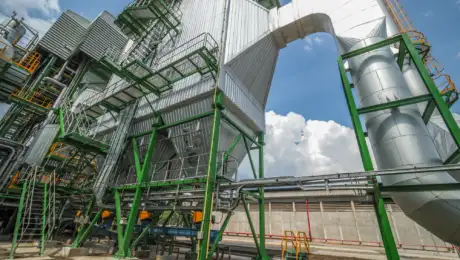
Understand your products' explosive characteristics
Understanding the unique ignition and explosion properties of gases, vapours, and liquids is essential for any high-hazard industries, particularly those where combustible materials are handled, stored or processed. It helps with the planning and implementation of a robust safety system designed to protect the workforce, minimise operatioal losses, and preserve the company’s reputation.
By thoroughly performing flammability and explosion property testing such as flashpoints, ignition temperatures, explosion limits, and minimum ignition energies, organisations can quantify associated risks and implement safety controls to manage and mitigate those risks effectively.
Whether you are dealing with traditional fuels or emerging technologies like hydrogen or advanced batteries, understanding the flammability properties of materials ensures that safety remains a priority throughout the lifecycle of a project or process.
Gexcon performs tests to determine the explosion characteristics of gases, vapours and liquids. All our tests are performed following internationally recognised standards.
Gexcon's testing solutions
Determination of the auto-ignition temperature of gases and vapours
The auto-ignition temperature of a substance is used to assess the ignition hazards of gases and vapours. The test is performed in a heated vessel into which the test sample is introduced. The temperature and sample concentration are varied until the threshold of ignition is determined. The test is performed according to EN 14522: ‘Determination of the autoignition temperature of gases and vapours.’
Conductivity of liquids
This test measures the conductivity of liquids, which allows the evaluation of their electrostatic charging properties.
The conductivity of a liquid is an important measure to determine electrostatic ignition hazards. Low-conductivity liquids obtain charges. For example, during pouring or stirring operations—liquids with conductivities < 5×10-11 S m-1 are low enough that electrostatic hazards must be carefully guarded. However, for liquids with extremely low conductivity, i.e. conductivities < 10-13 S m-1, charge buildup occurs to a lesser extent and is not considered hazardous. These low-conductive liquids may be subject to incendive brush discharges. Liquids with high conductivity may be involved in static electrification accidents if they are placed inside insulated vessels or in the form of an aerosol.
Explosion limits
Gexcon applies the bomb method as described in EN 1839: a quiescent mixture in a closed vessel (bomb) is subjected to an ignition source. The overpressure is measured. The amount of test substances in the mixture is varied until no significant overpressure is seen, thus determining the lower and upper explosion limits.
Maximum explosion overpressure and maximum rate of pressure rise
Gexcon determines the maximum explosion overpressure and rate of pressure rise in a closed test vessel (bomb) as described in EN 15967. Explosive mixtures of the substance and air are prepared in the vessel at atmospheric conditions and ignited in the centre. The pressure-time history is measured. From the pressure-time histories, the highest rate of pressure rise (dt/dt)m is calculated, and the highest pressure is determined. This is performed over a large range of substance-air concentrations until the maximum values of both parameters have been obtained.
Laminar burning velocity
Gexcon applies the bomb (closed vessel) method to determine the laminar burning velocity. Mixtures of the substance to be investigated and the air are prepared in the closed vessel using the partial pressure method. Ignition in the centre yields a pressure-time history. Burning velocities are extracted from the pressure-time history. This is repeated over a large range of substance-air concentrations until the maximum value of the burning velocity is obtained.
Featured insight
Recent findings suggest that the Energy Institute's guidelines for evaluating high flash point liquids might be overly conservative, potentially inflating costs.






